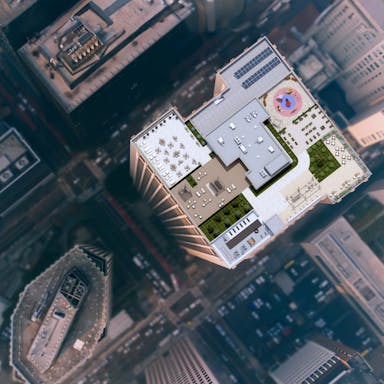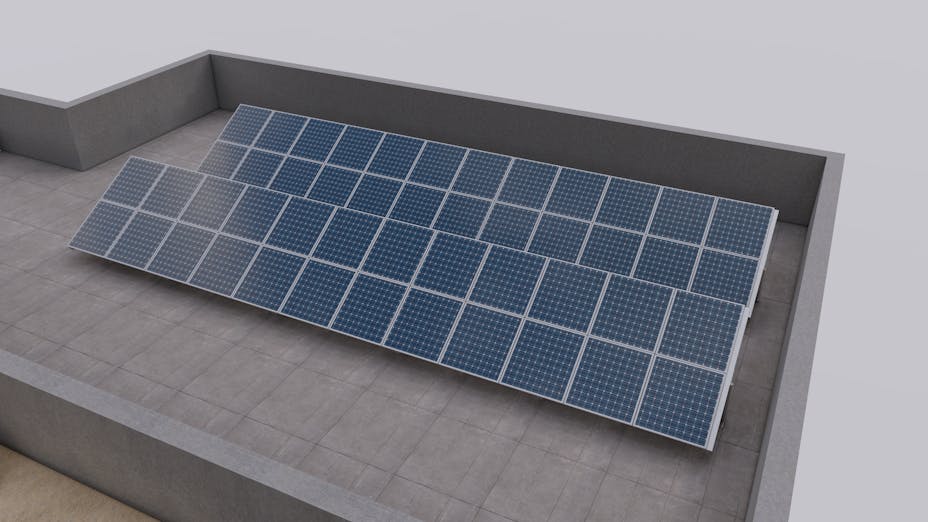Flat roofs are not a new construction feature but they have evolved rapidly and are now designed to be fully functional spaces on many buildings. Today, flat roofs commonly house not just plant and building services equipment but energy efficiency infrastructure, social spaces, and much more.
Are flat roofs suited for solar energy installations?
Using the roof for renewable energy generation is a great way to make efficient and practical use of the space. Factors like the cost of living crisis, increasing energy prices globally and the drive towards net zero contribute to the growing number of solar installations.
The European Commission reports that the cost of solar power has decreased by 82% over the last decade, making it the most competitive source of electricity in many parts of the EU1. In the coming years, the EU is even proposing to make solar panel installations mandatory on certain types of buildings.





